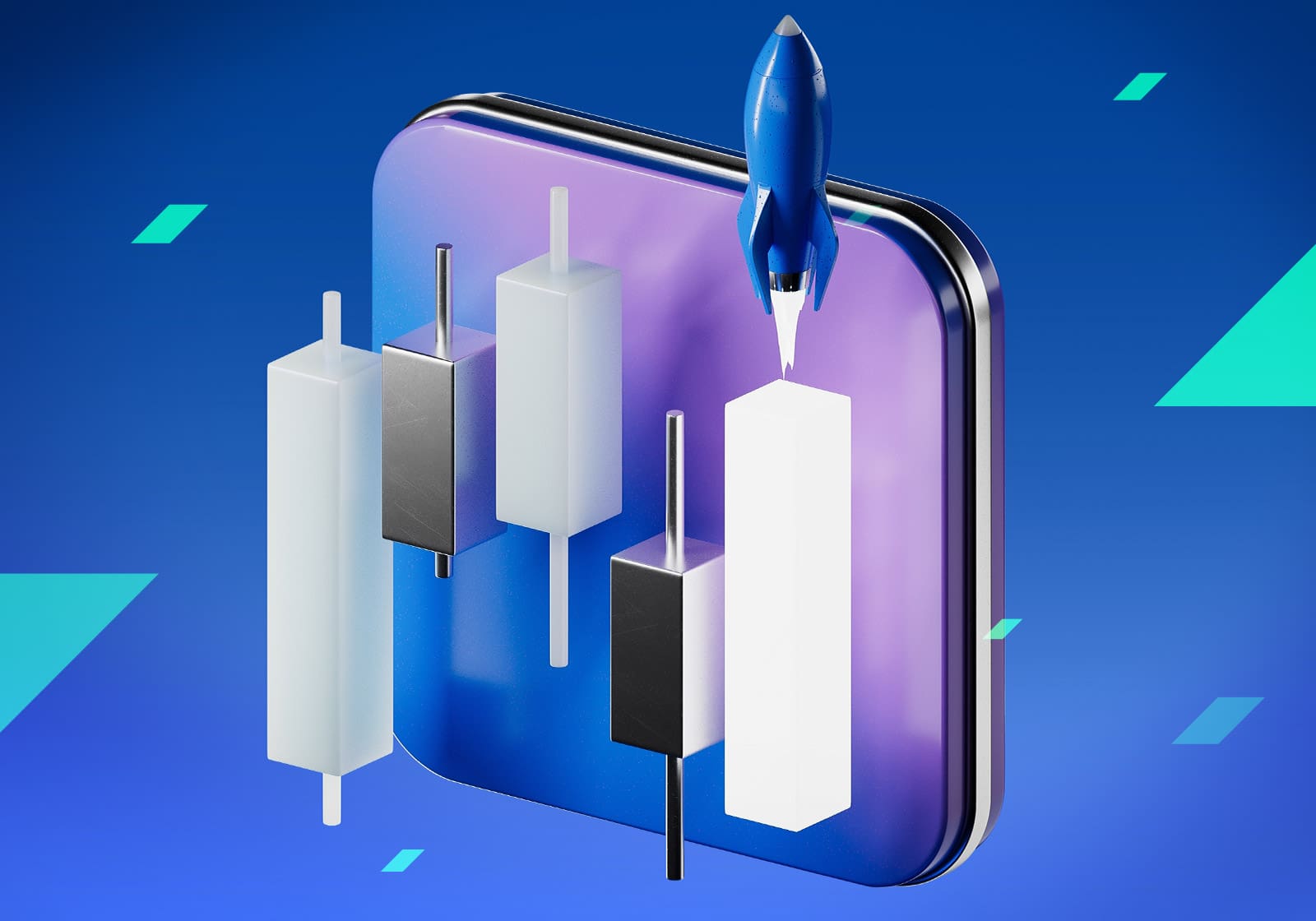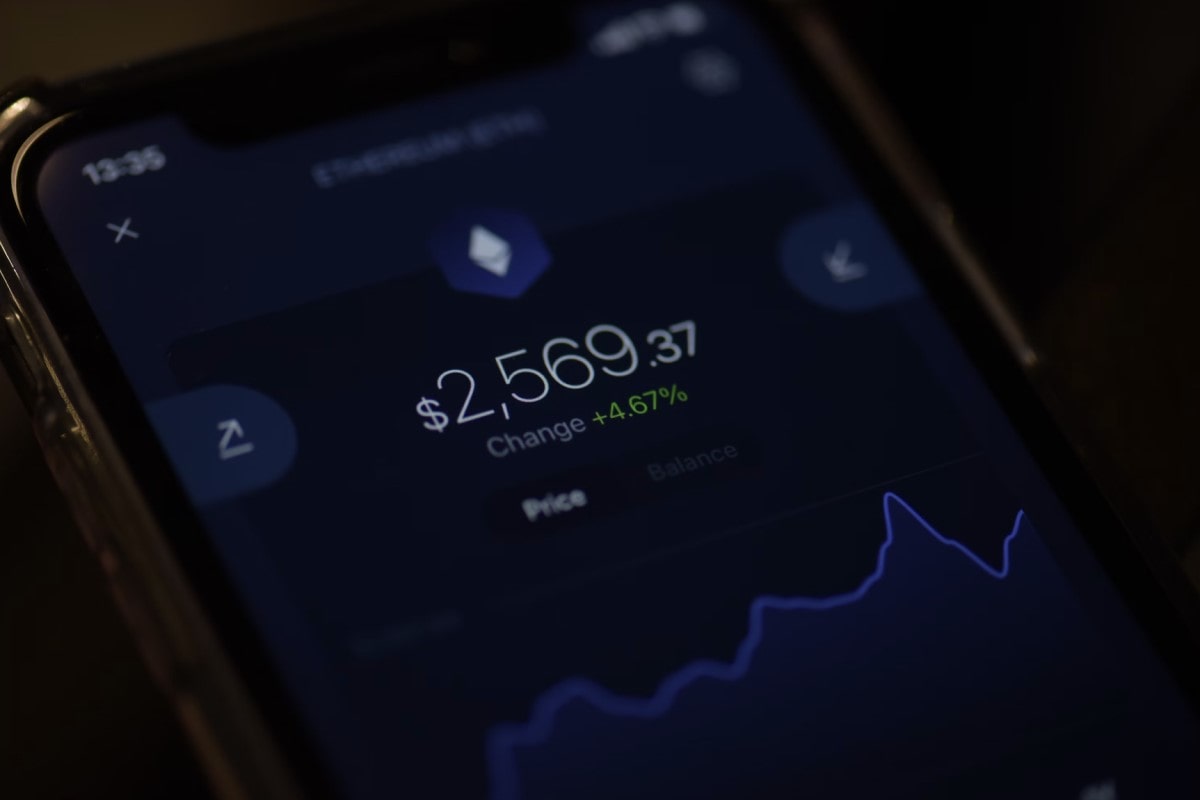How to Set Up Your First Crypto Portfolio Like a Pro

Everyone wants to be a crypto investor today. Gone are the days when owning a digital asset seemed like something unreachable. Buying a crypto coin has become an accessible and easy task in all countries where owning cryptocurrency is legally allowed. It's human nature to expect to achieve impressive results when only taking the first steps in any niche. Regarding crypto investing, we want to create a million-dollar crypto portfolio that will regularly bring us passive income. However, you must first learn how to build a balanced crypto portfolio to achieve big results. Strategies and approaches may differ based on goals, risk tolerance, etc. But what is the best way to invest in cryptocurrency if you take your first steps in the field? In five steps, let's learn how to build your first balanced crypto portfolio.
What Is a Crypto Portfolio?
A crypto portfolio is a collection of digital assets investors buy to increase profits. Unlike a normal portfolio, a crypto portfolio suggests using a digital wallet to hold your crypto assets. For example, your crypto portfolio in 2024 may include popular assets such as Bitcoin, Ethereum, Cardano, etc.
Crypto Portfolio Allocation and Diversification
Before you start working on your crypto portfolio, you need to know the difference between crypto portfolio allocation and a diversified crypto portfolio.
- Crypto portfolio allocation refers to investing in different classes of assets, including cryptocurrency and stocks, precious metals, cash, etc.
- Crypto portfolio diversification suggests that you diversify your investments across different assets or sectors. This is one of the best approaches to reduce your investment risks. For example, a diversified crypto portfolio refers to buying and holding different digital assets in your digital wallet. A diversified crypto portfolio may include 50% of bitcoins, 15% of stablecoins, 15% of NFTs, and 10% of altcoins. There is no one rule that fits all investors' needs. Managing your crypto portfolio fully depends on your goals and investment expectations.
Concentrated vs Diversified Crypto Portfolios
Most crypto experts recommend diversifying your crypto portfolio. When investing in any digital asset, remember how volatile cryptocurrencies may be. A diversified crypto portfolio lets you reduce the overall risk of losing money. Not every crypto investment will be a winner. While one coin you own can bring gains, another may bring you losses. With the proper crypto portfolio allocation and diversification, you can set up your crypto portfolio to bring you profits in the long run.
Another valuable recommendation from expert crypto investors is managing a highly diversified crypto portfolio. Such an approach leads to higher average returns than a concentrated crypto portfolio. Better-performing assets can balance the worse-performing ones, resulting in higher average returns.
5 Types of Cryptocurrencies Explained

Now that we know the meaning of crypto portfolio allocation and diversification and understand that a diversified crypto portfolio can bring us higher gains, let's consider the main types of cryptocurrencies available in the market. By understanding the difference between different types of crypto assets, you can create a more diversified crypto portfolio that will bring you higher returns for your investments.
Utility Tokens
A utility token is a cryptocurrency that provides holders access to a product within a specific blockchain ecosystem. Such tokens allow holders to perform specific actions on a network. For example, BNB is a utility token on the Binance exchange, which you can use to save on fees and services and participate in raffles. You can also trade BNB-based trading pairs (like BTC/BNB) and save 25% on fees.
Unlike other cryptocurrencies, utility tokens are not minable. They are pre-mined, meaning they are created all at once and distributed in a manner determined by the team behind the project. In other words, utility tokens serve the purpose of performing specific actions within a blockchain network. Unlike other types of cryptocurrencies described as digital money, utility tokens are pieces of software.
Stablecoins
Stablecoins are cryptocurrencies pegged to one dollar. Stablecoins like USDT and FDUSD allow crypto traders and investors to switch from digital to fiat money if cryptocurrency becomes bearish.
Payment Tokens
Payment tokens are unique assets that transfer value between users within specific environments or blockchain networks. Some popular examples of payment tokens include Bitcoin, Bitcoin Cash, and Litecoin. Most payment tokens aim to improve Bitcoin by either offering lower fees or faster transaction speed.
Governance Tokens
Governance tokens are assets commonly found on DeFi platforms. They give holders different governance rights, most often voting rights. The value of governance tokens like UNI and SUSHI is defined by the adoption rate and success of the protocol on which they are based.
Security Tokens
Security tokens are cryptocurrencies representing a project share, providing you with voting rights and equity in the crypto project. You will rarely encounter this term in crypto because most investors and founders do not want their assets to fall under US securities law.
How to Build a Balanced Crypto Portfolio

When you decide to build a balanced crypto portfolio and manage it like a pro, remember there is no one-size-fits-all rule for building a million-dollar crypto portfolio. By following the five steps on how to build a crypto portfolio, you can build a well-balanced cryptocurrency portfolio, even if this is your first experience.
Define your goals
Setting and achieving clear goals are vital elements of successful crypto investing. When working on goal-setting, be as specific with your objectives as possible. Rather than making a profit (a very generalised goal everyone looks forward to achieving), be more specific by setting a goal like "doubling the initial investment twice in six months."
Be realistic with your objectives rather than setting clear goals. Set achievable goals if you are only taking the first steps in setting up a cryptocurrency portfolio. It's better to start small and gradually increase your goals as you gain more experience.
Once your goals are set, work on the plan to achieve them. Your crypto investing plan should include a list of coins you'd like to buy, the budget you can afford to spend for the investment, and the point when you want to sell your assets. By keeping a well-defined plan handy, you can prevent yourself from making impulsive decisions, most of which result in revenue loss.
Consider your risk tolerance
Cryptocurrency is widely known for its volatility, which you should consider when creating a balanced crypto portfolio. While some investors consider high volatility a money-making opportunity, others prefer less risky and more stable crypto assets. Determining your risk tolerance is the next step you need to take when building a million-dollar crypto portfolio.
Risk tolerance is closely connected to your overall investing goals. If you are looking forward to making a quick profit, you are likely to have a higher risk tolerance because you are likely to accept short-term losses to make a gain. You are likely to have a lower risk tolerance if you are aiming for long-term gains. This is because you are more willing to invest in cryptocurrencies that have the potential to increase in value over time.
Once you determine your risk tolerance, you may proceed to examine different digital assets and assess their risks. Some assets are less risky than others. For example, Bitcoin is a sounder investment than Shiba Inu.
Use a mix of crypto assets
We recommend creating a diversified crypto portfolio. By investing in different tokens and coins, you can significantly minimise the risk of losing funds. Since you've already determined your risk tolerance, you can diversify your crypto portfolio based on your findings. For example, you can invest 70% of your funds in less volatile crypto assets and fund the remaining 30% into more speculative altcoins.
Investing in different types of cryptocurrency is another approach to building a diversified crypto portfolio. If you navigate to the top of this post, you will find a list of 5 types of crypto assets. Based on those findings, you can diversify your crypto portfolio by investing 50% of your funds into payment tokens, 25% governance tokens, and 25% security tokens. You can opt for a different approach and diversify your portfolio by investing in coins, tokens, and ICOs.
Regularly rebalance your crypto portfolio
Rebalancing is a crucial step you shouldn't skip when learning how to build your first crypto portfolio. Due to the high volatility of the crypto market, you need to rebalance your holdings periodically to protect your portfolio from big losses.
For example, your $10,000 investment in Bitcoin in 2017 should have resulted in a $100,000 gain today. Unless you rebalance your portfolio, you will face a significant drop if the price drops a fraction of its current value. So, even if you find it painful to sell Bitcoin when its price is skyrocketing, missing an opportunity to sell it before it drops would result in considerable losses.
Use a crypto portfolio tracker
A crypto portfolio tracker is a service that allows you to trace the movements of your crypto holdings. For example, consider using CoinMarketCap, one of the industry's most popular crypto price trackers. To start tracking the price of specific assets, you need to manually add your holdings because the tracker doesn't integrate into crypto wallets. Using a crypto portfolio tracker is one of the significant recommendations for all crypto investors looking forward to watching their current crypto portfolio allocation stacking up with investment goals.
Closing Words
Learning how to build a crypto portfolio, you should be ready for gains and losses. Due to the highly volatile nature of the crypto market, diversifying your investments and rebalancing your portfolio are among the significant steps that should help you avoid losses and achieve your investment goals. To create a well-balanced crypto portfolio, devote some time to setting up a strategy to create a suitable portfolio for your risk tolerance.
Tags
Try our Bitcoin Cloud Miner and get additional crypto rewards based on your trading volume. It's immediately available upon registration.
Try our Bitcoin Cloud Miner and get additional crypto rewards based on your trading volume. It's immediately available upon registration.



